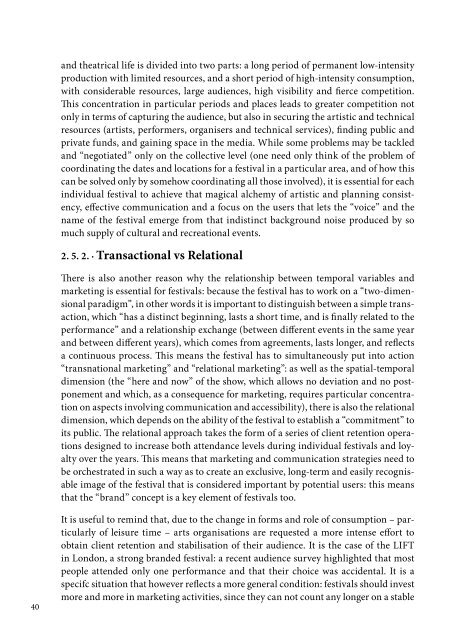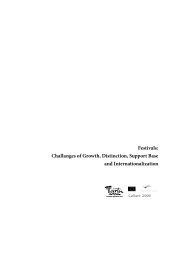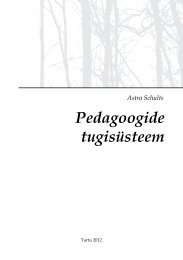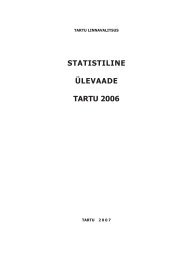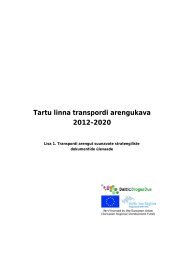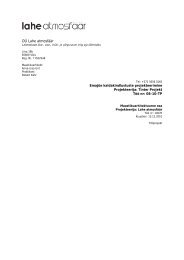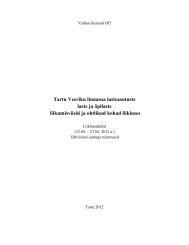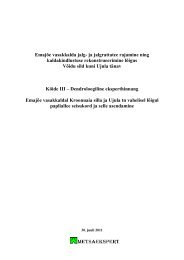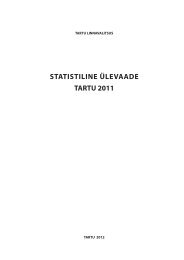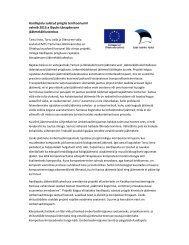Festivals - Fondazione Fitzcarraldo
Festivals - Fondazione Fitzcarraldo
Festivals - Fondazione Fitzcarraldo
Create successful ePaper yourself
Turn your PDF publications into a flip-book with our unique Google optimized e-Paper software.
and theatrical life is divided into two parts: a long period of permanent low-intensity<br />
production with limited resources, and a short period of high-intensity consumption,<br />
with considerable resources, large audiences, high visibility and fierce competition.<br />
This concentration in particular periods and places leads to greater competition not<br />
only in terms of capturing the audience, but also in securing the artistic and technical<br />
resources (artists, performers, organisers and technical services), finding public and<br />
private funds, and gaining space in the media. While some problems may be tackled<br />
and “negotiated” only on the collective level (one need only think of the problem of<br />
coordinating the dates and locations for a festival in a particular area, and of how this<br />
can be solved only by somehow coordinating all those involved), it is essential for each<br />
individual festival to achieve that magical alchemy of artistic and planning consistency,<br />
effective communication and a focus on the users that lets the “voice” and the<br />
name of the festival emerge from that indistinct background noise produced by so<br />
much supply of cultural and recreational events.<br />
2. 5. 2. · Transactional vs Relational<br />
There is also another reason why the relationship between temporal variables and<br />
marketing is essential for festivals: because the festival has to work on a “two-dimensional<br />
paradigm”, in other words it is important to distinguish between a simple transaction,<br />
which “has a distinct beginning, lasts a short time, and is finally related to the<br />
performance” and a relationship exchange (between different events in the same year<br />
and between different years), which comes from agreements, lasts longer, and reflects<br />
a continuous process. This means the festival has to simultaneously put into action<br />
“transnational marketing” and “relational marketing”: as well as the spatial-temporal<br />
dimension (the “here and now” of the show, which allows no deviation and no postponement<br />
and which, as a consequence for marketing, requires particular concentration<br />
on aspects involving communication and accessibility), there is also the relational<br />
dimension, which depends on the ability of the festival to establish a “commitment” to<br />
its public. The relational approach takes the form of a series of client retention operations<br />
designed to increase both attendance levels during individual festivals and loyalty<br />
over the years. This means that marketing and communication strategies need to<br />
be orchestrated in such a way as to create an exclusive, long-term and easily recognisable<br />
image of the festival that is considered important by potential users: this means<br />
that the “brand” concept is a key element of festivals too.<br />
40<br />
It is useful to remind that, due to the change in forms and role of consumption – particularly<br />
of leisure time – arts organisations are requested a more intense effort to<br />
obtain client retention and stabilisation of their audience. It is the case of the LIFT<br />
in London, a strong branded festival: a recent audience survey highlighted that most<br />
people attended only one performance and that their choice was accidental. It is a<br />
specifc situation that however reflects a more general condition: festivals should invest<br />
more and more in marketing activities, since they can not count any longer on a stable


